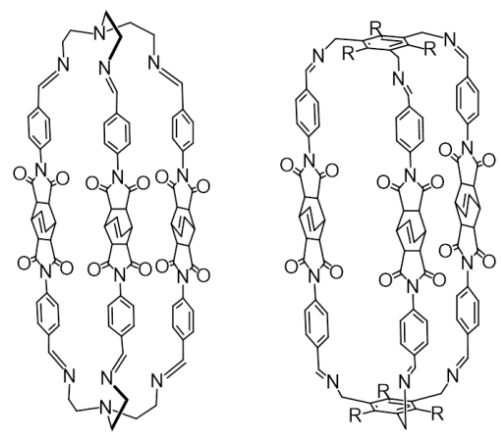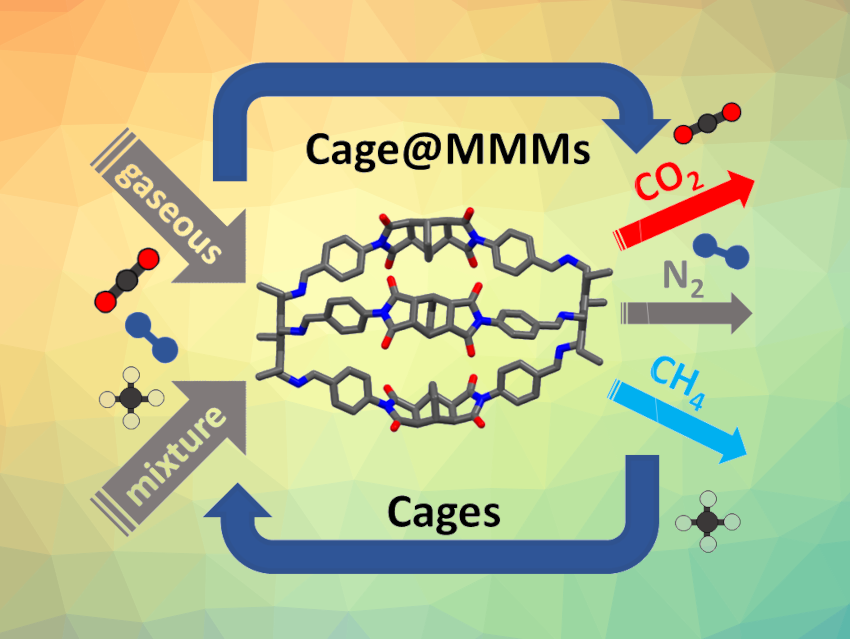Materials and technologies for CO2 capture and separation could be important tools in the fight against climate change. Membrane-based separation is convenient, but suffers from a trade-off between permeability and selectivity. Mixed-matrix membranes (MMMs) could boost the performance compared with neat membranes by combining the scalability and processability of polymer membranes with the selectivity of fillers (e.g., organic cages or macrocyclic compounds).
Johannes Carolus Jansen, Institute on Membrane Technology, National Research Council of Italy, Rende, Mariolino Carta, Swansea University, UK, Valeria Amendola, University of Pavia, Italy, and colleagues have developed imido/imino cages (example pictured above) for modifying the transport properties of neat membranes, aiming to achieve a high selectivity for CO2. The team prepared two cages (pictured below) via [2+3] imine condensations of two different polyamines with a dialdehyde compound that has a rigid bicyclo[2.2.2]oct-7-ene-2,3,5,6-tetracarboxydiimide core.

Gas adsorption studies showed that the cages can adsorb CO2 with a good selectivity over N2 and CH4. The cages were also tested as fillers in MMMs, using either Matrimid® or a polyether ether ketone (PEEK-WC) as the polymer matrix. The team found an improvement of the gas transport properties compared to the pure polymer membranes.
- CO2 separation by imide/imine organic cages,
Sonia La Cognata, Riccardo Mobili, Chiara Milanese, Massimo Boiocchi, Mattia Gaboardi, Donatella Armentano, Johannes Carolus Jansen, Marcello Monteleone, Ariana R. Antonangelo, Mariolino Carta, Valeria Amendola,
Chem. Eur. J. 2022.
https://doi.org/10.1002/chem.202201631




![Synthesis of [c2]Daisy Chains via Mechanochemistry](https://www.chemistryviews.org/wp-content/uploads/2025/04/202504_RotaxanesWithSolidStateMechanochemistry-125x94.png)